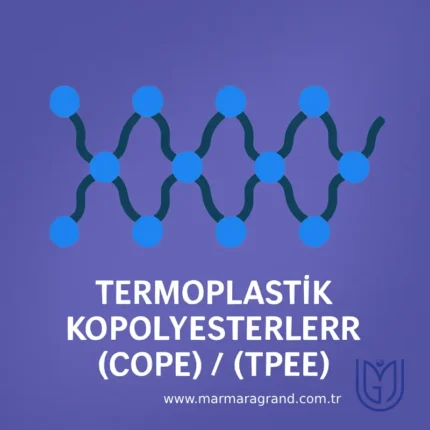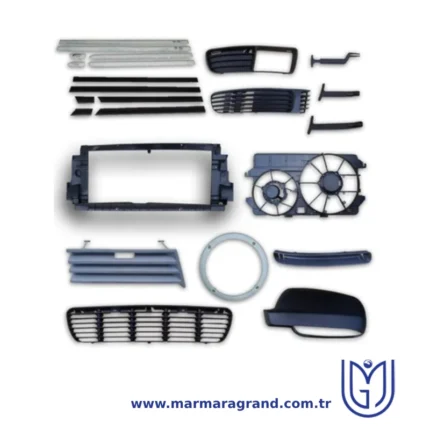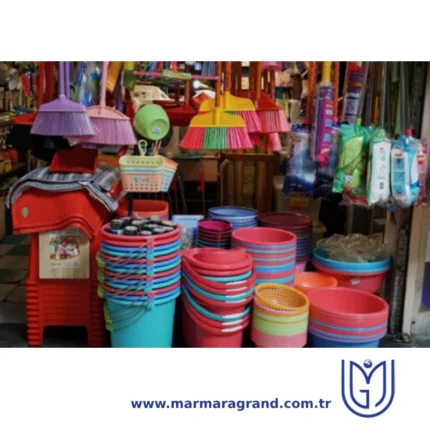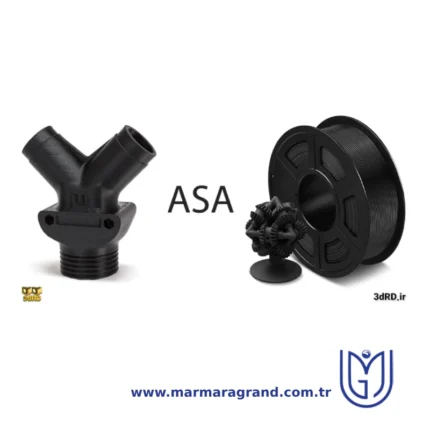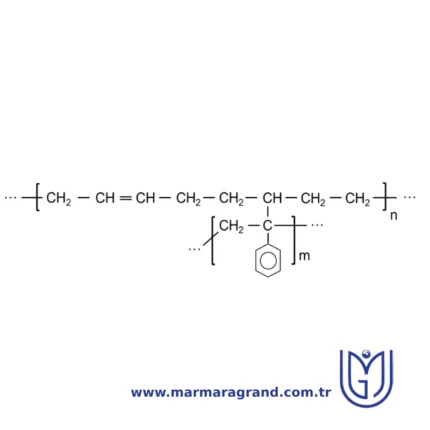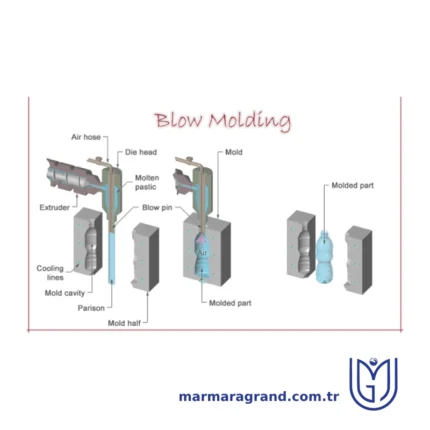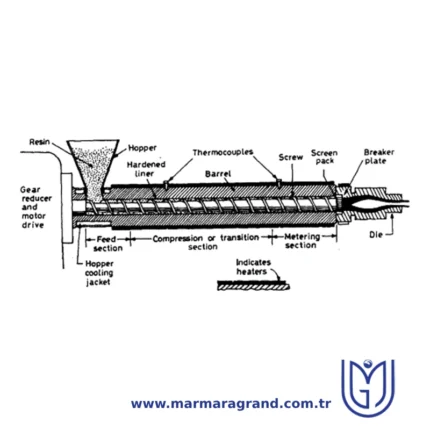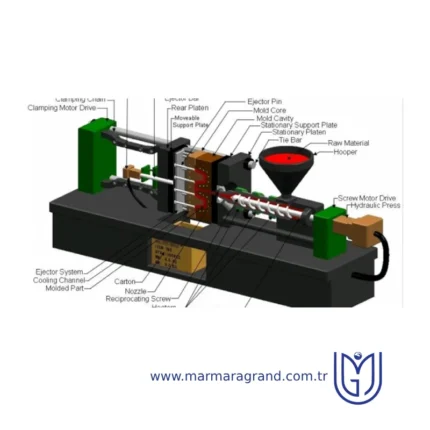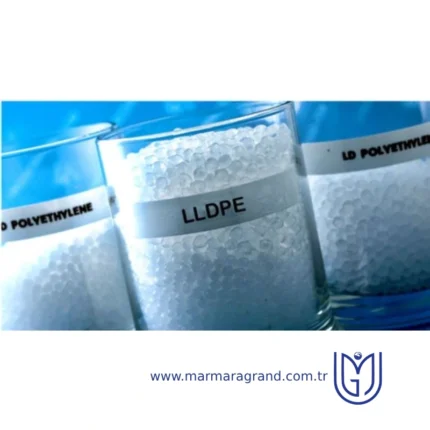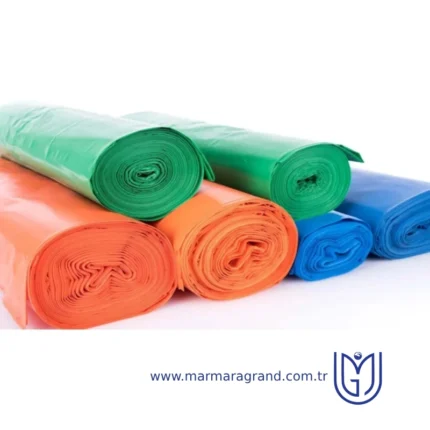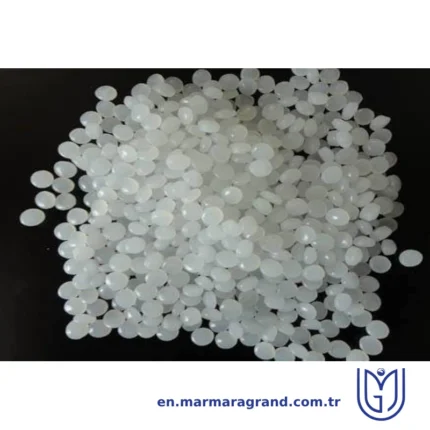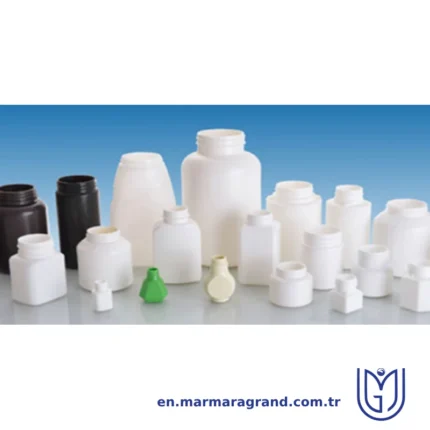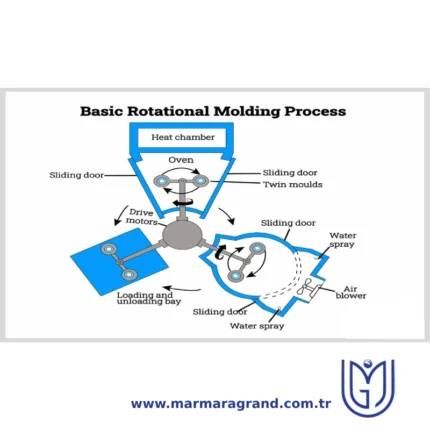(COPE)/(TPEE) Thermoplastic copolyesters
Thermoplastic Copolyesters (COPE), also known as Thermoplastic Polyester Elastomers (TPEE), are a class of thermoplastic elastomers (TPEs) that combine the mechanical properties of engineering plastics with the elasticity of rubber. They are composed of hard polyester crystalline segments and soft amorphous segments, providing a balance of strength, flexibility, and chemical resistance.
PropertiesThermoplastic Copolyesters (COPE), also known as Thermoplastic Polyester Elastomers (TPEE), combine the mechanical strength of engineering plastics with the flexibility and resilience of elastomers. They exhibit excellent elasticity, allowing them to return to their original shape after deformation, while also providing high tensile strength and durability. COPE materials offer outstanding chemical and solvent resistance, making them suitable for harsh environments. Their thermal stability enables them to maintain performance across a wide temperature range, with good low-temperature flexibility and resistance to heat aging. Additionally, they possess excellent abrasion resistance, impact strength, and fatigue resistance, ensuring longevity in demanding applications. With easy processability through injection molding, extrusion, and blow molding, COPE is widely used in automotive, industrial, consumer, and medical applications where a balance of toughness, flexibility, and chemical resistance is required.
StructureThermoplastic Copolyesters (COPE), also known as Thermoplastic Polyester Elastomers (TPEE), are a class of high-performance elastomers that combine the characteristics of both thermoplastics and rubbers. Their structure consists of alternating soft and hard segments, where the soft segments are typically made of aliphatic polyether or polyester, providing flexibility and elasticity, while the hard segments are composed of polyester blocks, offering strength, thermal resistance, and durability. This segmented block copolymer structure enables TPEEs to exhibit excellent mechanical properties, such as high tensile strength, impact resistance, and superior fatigue endurance. The presence of ester linkages in the hard phase contributes to chemical resistance and heat stability, while the soft phase ensures flexibility even at low temperatures. Due to this unique molecular architecture, COPEs find applications in various industries, including automotive, consumer goods, electrical components, and medical devices, where both resilience and processability are essential.
Applications
- Automotive: Used in air ducts, CVJ boots, bellows, gaskets, and wire coatings due to high heat and chemical resistance.
- Industrial & Mechanical: Employed in conveyor belts, hoses, seals, and grommets for durability and flexibility.
- Consumer Goods: Found in footwear soles, sports equipment, and flexible smartphone components for comfort and toughness.
- Electrical & Electronics: Used in cable insulation, connectors, and protective coatings due to excellent dielectric properties.
- Medical Devices: Applied in tubing, catheters, and soft-touch grips because of biocompatibility and sterilization resistance.
Advantages
- High Elasticity & Flexibility: Maintains shape and flexibility even under stress.
- Excellent Heat Resistance: Performs well at elevated temperatures compared to other TPEs.
- Superior Mechanical Strength: Offers high tensile strength, impact resistance, and fatigue endurance.
- Good Chemical Resistance: Resistant to oils, solvents, and many industrial chemicals.
- Wide Processing Window: Easily processed through injection molding, extrusion, and blow molding.
- Recyclable: More environmentally friendly than thermoset elastomers.
Disadvantages
- Higher Cost: More expensive than other thermoplastic elastomers (TPEs).
- Limited Low-Temperature Flexibility: Can become less flexible at extremely low temperatures compared to TPU.
- Absorbs Moisture: May require drying before processing to prevent defects.
- Processing Challenges: Requires precise temperature control during molding and extrusion
Acrylonitrile Butadiene Styrene (ABS)
ABS is a terpolymer made by polymerizing styrene and acrylonitrile in the presence of polybutadiene. The proportions can vary from 15% to 35% acrylonitrile, 5% to 30% butadiene and 40% to 60% styrene. ABS is most commonly polymerised through the emulsification process or the expert art of combining multiple products that don’t typically combine into a single product.
Structure
ABS is a long chain of polybutadiene crisscrossed with shorter chains of poly(styrene-co-acrylonitrile).Properties
The combination of polymers gives ABS a unique set of properties that make it highly desirable for various applications. The acrylonitrile component contributes to the material's chemical and thermal resistance, while the butadiene component enhances its impact strength and toughness. Lastly, the styrene component imparts rigidity and processability to the ABS material. ABS tensile strength ranges from 30 to 60 megapascals (MPa), ensuring structural integrity and load-bearing capabilities. also ABS materials demonstrate good resistance to a wide range of chemicals, including acids, alkalis, and various solvents.Applications
Automotive Industry ABS is extensively used in the automotive industry for both interior and exterior components. Its excellent impact resistance, durability, and ease of processing make it suitable for applications such as dashboard panels, door trims, interior handles, and exterior body parts. 2.Consumer Goods: It is commonly used for manufacturing household appliances, including vacuum cleaners, kitchen appliances, and home entertainment systems. ABS's toughness, impact resistance, and electrical insulation properties make it suitable for these applications. 3.Medical and Healthcare: ABS materials are increasingly used in the medical and healthcare sectors. Their biocompatibility, ease of sterilization, and resistance to chemicals make them suitable for applications such as medical equipment housings, handles, and trays. ABS's dimensional stability and durability ensure that medical devices withstand repeated sterilization processes without compromising their performance. 3.Industrial and Manufacturing: ABS materials find numerous applications in the industrial and manufacturing sectors. They are commonly used in the production of protective equipment, tool handles, machinery components, and housings for industrial machinery. ABS's excellent mechanical properties, including impact resistance and dimensional stability, make it suitable for demanding industrial environments.Advantages
- reasonable production costs
- ability to withstand being heated and cooled multiple times
- suitable for recycling
- high Impact resistance
- Chemical resistance
- High Strength and stiffness
Disadvantages
- Flammability
- Poor weather resistance
- Limited heat resistance
Acrylonitrile Styrene Acrylate (ASA)
ASA is a copolymer of SAN and acrylic rubber, and it is a highly functional plastic with excellent weatherability while maintaining most of the advantages of ABS. Thanks to its excellent retention of physical properties and appearances in outdoor applications for a long time, it is used as a material for automobile exterior, construction and furniture finishing sheet, etc.
Acrylonitrile Styrene Acrylate structureASA is typically formed by grafting acrylonitrile and styrene onto an acrylic ester elastomer backbone. The acrylic ester phase provides the material with flexibility and impact resistance, while the acrylonitrile and styrene phases contribute to rigidity, chemical resistance, and surface finish.
Acrylonitrile Styrene Acrylate propertiesAcrylonitrile-Styrene-Acrylate (ASA) polymer exhibits a combination of properties that make it well-suited for outdoor and demanding applications. Acrylonitrile Styrene Acrylate (ASA) polymer is a thermoplastic known for its excellent weather resistance, high impact strength, and UV stability, making it ideal for outdoor applications. It combines the toughness of acrylonitrile, the rigidity of styrene, and the weather-resistant properties of acrylic ester, resulting in a material that maintains its color, gloss, and mechanical integrity even under prolonged exposure to sunlight and harsh environmental conditions. ASA is resistant to chemicals, heat, and environmental stress cracking, and it exhibits good processability, enabling it to be molded into complex shapes. Its durability and aesthetic qualities make it suitable for use in automotive parts, outdoor furniture, and building materials.
ApplicationAutomotive Industry
- Exterior Components: Used for manufacturing exterior parts like side view mirrors, radiator grilles, and trims due to its resistance to UV radiation and harsh weather conditions.
- Interior Components: Employed in dashboards, panels, and other interior parts requiring durability and aesthetic appeal.
- Roofing and Cladding: ASA is used in roofing sheets, siding, and cladding materials for its resistance to fading and cracking when exposed to sunlight.
- Windows and Doors: Frames and profiles made of ASA are durable and maintain their color over time.
- Casing and Enclosures: ASA is used in the production of enclosures for electronic devices, electrical components, and appliances due to its impact resistance and aesthetic surface finish.
- Connectors and Insulators: The polymer is valued for its insulating properties and stability.
- Outdoor Furniture: Widely used for chairs, tables, and other outdoor furniture because it retains color and strength under prolonged exposure to sunlight and rain.
- Household Items: Utilized in kitchen appliances, vacuum cleaners, and other durable goods.
- Filament Material: ASA is a popular material for 3D printing, especially for outdoor applications, as it offers better UV resistance compared to ABS.
Advantages
- High impact strength
- Good Processability
- Weather Resistance
- Color and Gloss Retention
- Durability
Disadvantages
- Limited High-Temperature Resistance
- Flammability
- Lower Strength Compared to Metals
- Environmental Impact
Blow Molding
Blow molding is a manufacturing process used to create hollow plastic parts by inflating a heated plastic tube (called a parison or preform) inside a mold cavity until it conforms to the shape of the mold. It is widely used for producing bottles, containers, and other hollow objects.
Types of blow moldingContinuous Extrusion Blow Molding (EBM) Process:
- Molten plastic is continuously extruded in a tube-like form (parison).
- A mold clamps around the parison and inflates it with air.
- The part cools and solidifies before being ejected.
- Reciprocating Screw System: The screw moves back and forth to accumulate plastic before pushing it into the mold.
- Accumulator Head System: Plastic is stored in an accumulator before being discharged in a single shot.
- Plastic is first injection molded into a preform (small tube-like shape with a finished neck).
- The preform is then transferred to a blow mold and inflated.
- The final shape is formed, cooled, and ejected.
- Similar to IBM, but includes a stretching step before inflation to improve strength and clarity.
- The preform is reheated, stretched lengthwise, and then blown into shape.
- A parison is extruded and clamped in a mold.
- The parison is stretched both axially (lengthwise) and radially (outward) before being inflated.
Advantages of blow molding
- Cost-Effective Production
- High Efficiency & Fast Production
- Ability to Produce Complex Shapes
- Lightweight and Durable Products
- Versatile Material Usage
- Suitable for Large & Small Products
Disadvantages of blow molding
- Limited to Hollow Shapes
- High Initial Equipment & Mold Costs
- Inconsistent Wall Thickness
- Weak Seams & Stress Points
- Less Precision Compared to Injection Molding
- High Energy Consumption
Applications of blow molding
- packaging Industry: Bottles for beverages, cosmetics, pharmaceuticals, and household products.
- Automotive Industry: Fuel tanks, air ducts, washer fluid reservoirs, and coolant tanks.
- Industrial & Chemical Storage: Drums, barrels, IBCs, and spray bottles.
- Medical & Pharmaceutical: IV bottles, medicine containers, and diagnostic device housings.
- Consumer Goods: Toys, furniture components, water bottles, and detergent containers.
- Construction Industry: Water tanks, septic tanks, pipes, and conduits.
- Agriculture Industry: Pesticide and fertilizer containers, watering cans, and irrigation components.
Extrusion
The extrusion process is basically designed to continuously convert a soft material into a particular form. The heart of this processing/fabrication machine is a screw conveyer. It carries the cold plastic material (in granular or powdered form) forward by the action of the screw and squeezes it, and, with heat from external heaters and the friction of viscous flow, changes it to a molten stream (refer to Figure 1). As it does this, it develops pressure on the material, which is highest right before the molten plastic enters the die. The screen pack, consisting of a number of fine or coarse mesh gauzes supported on a breaker plate and placed between the screw and the die, filter out dirt and unfused polymer lumps. The pressure on the molten plastic forces it through an adapter and into the die, which dictates the shape of the final extrudate.
Hot extrusionHot extrusion is a hot working process, which means it is done above the material’s recrystallization temperature to keep the material from work hardening and to make it easier to push the material through the die. Most hot extrusions are done on horizontal hydraulic presses that range from 230 to 11,000 metric tons . Pressures range from 30 to 700 MPa , therefore lubrication is required, which can be oil or graphite for lower temperature extrusions, or glass powder for higher temperature extrusions. The biggest disadvantage of this process is its cost for machinery and its upkeep.
Cold extrusionCold Extrusion is a push-through compressive forming process with the starting material (billet/slug) at room temperature. During the process, however, the deforming material undergoes deformation heating (conversion of deformation work to heat) to several hundred degrees. Typically, a punch is used to apply pressure to the billet enclosed, partially or completely, in a stationary die.
Advantages of Extrusion:
- Cost-effective for large-scale production with minimal waste.
- Versatile: Supports various materials and shapes.
- Customizable: Additives and design flexibility.
- Consistent quality and scalable production.
- Energy-efficient and integrates with other processes.
Disadvantages of Extrusion:
- Material limitations: Not all polymers are suitable.
- High setup costs: Equipment and dies are expensive.
- Dimensional variability: Cooling shrinkage and die swell.
- Shape limitations: Intricate designs are challenging.
- Quality control issues: Surface defects and material inconsistencies.
- Post-processing needs: Cutting, finishing, or coating required.
- Environmental concerns: Energy use and plastic waste.
Application of extrusion1.Construction Industry
- Pipes and tubing (e.g., PVC pipes, drainage systems).
- Window and door profiles (e.g., uPVC frames).
- Insulation materials (e.g., foam boards, weather seals).
- Plastic films and sheets (e.g., food packaging, shrink wraps).
- Containers and trays.
- Seals and gaskets.
- Wire and cable insulation.
- Interior trims and protective sheathing.
- Straws, ropes, and garden hoses.
- Plastic profiles for furniture or appliances.
- Wire and cable coatings.
- Conduits for electrical wiring.
- Catheters, tubing, and other medical-grade profiles.
- Conveyor belts and guides.
- Protective linings for machinery.
- Irrigation tubing and films.
- Greenhouse covers.
General Purpose PolyStyrene GPPS
General purpose polystyrene, abbreviated as “GPPS”, is made from the styrene monomer polymer through a suspension process. It is a solid product that is compressed into granules to produce a wide range of products. This material has high clarity and transparency. GPPS is a rigid and transparent thermoplastic polymer that is highly versatile and easy to process. GPPS has excellent electrical insulation properties, is lightweight, and has good dimensional stability. It is commonly used in a wide range of applications such as packaging, household items, and office supplies.
Structure
GPPS is a thermoplastic polymer that is made from styrene monomer. The chemical structure of GPPS consists of a linear chain of styrene monomer units that are joined together by covalent bonds. The properties of GPPS can be modified by copolymerizing it with other monomers such as acrylonitrile, butadiene, Zinc or methyl methacrylate.Properties
GPPS is highly resistant to moisture and has good electrical insulation properties. IT is a brittle material with low-impact strength. It has a tensile strength of 50-60 MPa and a flexural modulus of 2,200-2,500 MPa. GPPS has a glass transition temperature (Tg) of 85-105°C and a melting temperature (Tm) of 200-240°C. It has a heat deflection temperature (HDT) of 70-80°C under a load of 0.45 MPa.Application
General Purpose Polystyrene (GPPS) is a versatile thermoplastic material that finds use in a variety of applications. Here are some of the most common applications of GPPS: Packaging GPPS is a popular choice for packaging materials due to its excellent transparency, rigidity, and moldability. It is commonly used to make food containers, disposable cutlery, and CD cases. GPPS is also used in the production of blister packs, which are commonly used to package pharmaceuticals. Consumer Products GPPS is used in the production of various consumer products due to its excellent electrical insulation properties, lightweight, and dimensional stability. It is commonly used to make toys, cosmetic packaging, and household items such as hangers, trays, and organizers. Building and Construction GPPS is used in the construction industry due to its excellent insulation properties, lightweight, and dimensional stability. It is commonly used to make insulation foam boards, window frames, and light fixtures. GPPS is also used in the automotive industry to make various parts such as instrument panels, door panels, and grilles due to its excellent moldability and dimensional stability.Advantages
- excellent moldability
- good insulator of heat and electricity
- versatile and cost-effective
- clear visibility of the contents inside
- Good dimensional stability
Disadvantages
- low-impact strength
- low thermal stability
- non-biodegradable
Linear Low Density Polyethylene (LLDPE)
LLDPE stands for Linear Low-Density Polyethylene. It is a type of polyethylene (a polymer made from ethylene monomers) that has short, linear branches in its molecular structure. This structure gives LLDPE unique properties compared to LDPE (Low-Density Polyethylene) and HDPE (High-Density Polyethylene).
StructureLLDPE has a unique linear molecular structure with short, controlled branches. This structure is different from LDPE (Low-Density Polyethylene), which has long and irregular branches. LLDPE consists of ethylene monomers (–CH₂–CH₂–) linked in a linear fashion. It has short, uniform side branches created by copolymerizing ethylene with α-olefins (like butene, hexene, or octene).These branches prevent the polymer chains from packing too tightly, giving LLDPE low density and flexibility.
PropertiesLLDPE (Linear Low-Density Polyethylene) is a versatile thermoplastic polymer known for its excellent flexibility, high impact resistance, and good tensile strength. it is slightly denser than LDPE but less rigid than HDPE, making it ideal for applications requiring toughness and stretchability. It has a high elongation at break (>500%), allowing it to withstand significant stretching without tearing. LLDPE exhibits excellent chemical resistance against acids, bases, and alcohols while maintaining low water absorption, making it suitable for moisture-sensitive applications. Thermally, it has a melting point of approximately 110–125°C and remains functional between -50°C and 60°C. Though it lacks inherent UV resistance, stabilizers can be added to improve durability under sunlight. Its ease of processing through extrusion, blow molding, and film manufacturing makes it widely used in plastic films, flexible tubing, cable insulation, and various molded products. While LLDPE is non-biodegradable, it is recyclable, contributing to sustainable material management.
Applications of Linear Low-Density Polyethylene (LLDPE)
- Packaging Industry:
- Stretch films and shrink wraps
- Plastic bags (grocery, trash, and industrial)
- Food packaging films (cling wraps, pouches)
- Agricultural Sector:
- Greenhouse films and mulch films
- Drip irrigation tubing and water storage tanks
- Industrial Applications:
- Pipes and fittings (flexible and durable)
- Cable insulation and protective coatings
- Industrial liners (chemical and water-resistant)
- Automotive Industry:
- Fuel tanks and hoses
- Interior soft components and protective covers
- Consumer & Household Products:
- Toys, containers, and household items
- Soft-touch grips and molded parts
- Medical & Pharmaceutical:
- Medical tubing and IV bags
- Sterile packaging films
Advantages of LLDPE
- Higher Flexibility and Toughness:
- More impact-resistant than LDPE
- Maintains durability even at low temperatures
- Excellent Chemical and Moisture Resistance:
- Resistant to acids, bases, and solvents
- Waterproof and corrosion-resistant
- Good Processability
- Lightweight and Cost-Effective
- Better Puncture and Tear Resistance:
- Ideal for thin film applications like stretch wraps
Disadvantages of LLDPE
- Lower Heat Resistance:
- Softens and deforms at high temperatures
- Not suitable for high-temperature applications
- Poor UV Stability:
- Requires UV stabilizers for outdoor use, or it degrades over time
- Lower Stiffness Compared to HDPE:
- Less rigid, making it unsuitable for structural applications
- Limited Gas Barrier Properties:
- Not ideal for gas-tight packaging applications
- Difficult to Process in Some Applications:
- Requires higher processing temperatures compared to LDPE
Low Density PolyEthylene (LDPE)
LDPE film grade is divided into several types, including general-purpose film, high-transparency film, heavy-duty film, shrink film, and cast film. These materials possess superior physical and mechanical properties, along with high chemical stability and excellent electrical insulation. They also feature low water vapor permeability and outstanding processability, making them ideal for various applications. Films made from these resins provide exceptional clarity and strong resistance to aging, ensuring durability and long-lasting performance.
StructureLDPE (Low-Density Polyethylene) film grade is a thermoplastic polymer made from ethylene monomers (C₂H₄) through a high-pressure polymerization process. Its molecular structure is characterized by high branching, which gives it its unique properties. Key Structural Features: Highly Branched Polymer:
- LDPE has short-chain and long-chain branches, preventing tight packing of polymer chains.
- Due to branching, LDPE has low crystallinity (~40–50%), making it soft and transparent.
- It is more flexible and stretchable than HDPE (High-Density Polyethylene).
- LDPE has a broad molecular weight distribution, contributing to good melt strength and processability in film extrusion.
PropertiesLow-Density Polyethylene (LDPE) film grade is a highly flexible and lightweight material known for its excellent elongation, impact resistance, and transparency. With a density ranging from 0.915 to 0.930 g/cm³, it offers good clarity but can appear slightly hazy. It has a relatively low melting point of around 105–115°C and remains flexible even at sub-zero temperatures, making it suitable for various applications. LDPE exhibits moderate tensile strength (8–17 MPa) and exceptional elongation at break (100–600%), ensuring durability and resilience. While it provides a good moisture barrier, its gas barrier properties are poor, allowing oxygen and CO₂ to pass through. Chemically, LDPE resists acids, bases, and alcohols but is vulnerable to hydrocarbons. Its excellent heat-sealing properties make it ideal for packaging applications, including food wrap, shrink films, and shopping bags. Additionally, it is widely used in agricultural films, protective industrial films, and medical applications such as IV bags and tubing. LDPE is typically processed through blown or cast film extrusion, operating within a temperature range of 160–220°C. However, due to its susceptibility to UV degradation, stabilizers are often added for outdoor applications. Overall, LDPE film grade is a versatile and cost-effective material, valued for its flexibility, sealability, and ease of processing.
Applications
- Packaging
- Used for manufacturing flexible packaging films (e.g., shopping bags, wraps, and pouches).
- Food packaging, including wraps, freezer bags, and shrink films.
- Industrial packaging for wrapping materials, products, and protective covers.
- Agricultural Use
- Greenhouse films for agricultural purposes, creating protective environments for plants.
- Mulch films for soil coverage and weed control.
- Consumer Products
- Plastic bags for grocery stores, retail packaging, and garbage bags.
- Cling films for food preservation and covering items.
- Disposable liners for various containers.
- Construction
- Vapor barriers in buildings, preventing moisture from seeping into structures.
- Covers for construction materials during storage or transportation.
- Medical Use
- Sterile packaging for medical devices, equipment, and pharmaceuticals.
- Medical drapes and covers.
Advantages
- Flexibility
- LDPE film is highly flexible and can be stretched without breaking.
- Transparency
- Offers high clarity and transparency, making it ideal for packaging.
- Chemical Resistance
- Good resistance to chemicals, oils, and greases.
- Low Cost
- Relatively affordable material, making it a cost-effective solution for many applications.
- Ease of Processing
- Easy to process with methods like extrusion, injection molding, and blow molding.
- Lightweight
- Lightweight material, reducing transportation and handling costs.
- Moisture Resistance
- Water-resistant properties, providing good moisture protection in packaging.
Disadvantages
- Low Strength
- Low tensile strength and can tear easily under stress or load.
- Limited Heat Resistance
- Has a low melting point, which limits its use in high-temperature environments.
- Environmental Impact
- Non-biodegradable and contributes to plastic pollution if not recycled properly.
- Poor UV Resistance
- Can degrade when exposed to UV light, leading to brittleness and color fading over time.
- Low Barrier Properties
- Not ideal for barrier applications like gas or vapor resistance compared to other materials like BOPP or PET.
Low Density PolyEthylene Injection (LDPE)
LDPE injection molding grade
LDPE injection molding grade is a specialized type of Low-Density Polyethylene designed for molding applications that require flexibility, impact resistance, and ease of processing.
StructureThe structure of LDPE injection molding grade is characterized by a highly branched, amorphous polymer configuration, which distinguishes it from other forms of polyethylene such as High-Density Polyethylene (HDPE). The polymer chains in LDPE are irregularly branched, meaning the chains do not pack closely together, resulting in a low degree of crystallinity. The polymerization of LDPE occurs through free-radical polymerization, typically under high pressure, which causes the long chains of the polymer to have side branches. For the injection molding grade, the polymer structure is tailored to achieve a higher melt flow index (MFI), which facilitates the material’s smooth flow and filling into injection molds.
PropertiesLDPE injection molding grade is a versatile polymer characterized by its high degree of branching and amorphous structure, which results in excellent flexibility. This material ensures smooth and efficient flow during the injection molding process. This makes it suitable for producing intricate parts with good surface finish. LDPE injection molding grade exhibits moderate tensile strength (around 8-12 MPa) and excellent elongation at break, providing resistance to cracking and impact. The material is also known for its good chemical resistance, particularly against acids, bases, and alcohols, while being less resistant to hydrocarbons. Additionally, it offers low moisture absorption and performs well under low temperatures, maintaining its flexibility. LDPE is easy to process and heat sealable. Despite its high impact resistance and toughness, it has a relatively low stiffness compared to higher-density polyethylene grades.
Applications
- Consumer Products:
- Household containers, lids, and dispensers
- Toys and other recreational items
- Furniture parts and lightweight molded components
- Packaging Industry:
- Caps, closures, and flexible lids
- Cosmetic and personal care packaging
- Food storage containers (FDA-approved grades)
- Medical & Pharmaceutical:
- Syringes, laboratory equipment, and sterile packaging
- Medical device housings and disposable instruments
- Industrial & Electrical:
- Cable coatings and wire insulation
- Protective covers and soft-touch components
- Pipes and low-pressure fittings
- Automotive Industry:
- Interior trims, protective covers, and soft components
- Fluid storage containers and under-the-hood parts
- Construction & Agriculture:
- Waterproofing membranes, gaskets, and sealants
- Molded irrigation components
Advantages
- Excellent Processability
- High Flexibility & Impact Resistance
- Lightweight Material
- Good Chemical & Moisture Resistance
- Food-Safe and Non-Toxic
- Cost-Effective
Disadvantages
- Low Mechanical Strength
- Limited Heat Resistance
- Poor UV Resistance
- Not Biodegradable
- Weak Barrier Properties
Rotational Molding
The rotational molding process is a straightforward yet effective method. In this technique, a plastic material, typically in powdered form, is placed inside a hollow mold. This mold is usually made of cast aluminum or fabricated from sheet steel. Once sealed, the mold rotates slowly around two axes. Simultaneously, it is heated inside an oven while continuously rotating. As the temperature rises, the plastic powder melts and evenly coats the inner surface of the mold. When the plastic has completely liquefied, the mold is transferred to a cooling station, where it is cooled using air or occasionally a fine mist of water. During this phase, the plastic gradually solidifies and takes its final shape. Once the material has cooled sufficiently and detaches from the mold’s surface, the process is halted, and the finished product is removed from the mold.
Types of rotational moldingClamshell Rotational Molding
- Uses a single-arm machine with an oven and cooling chamber combined.
- Best for smaller production runs or prototyping.
- Less efficient than multi-arm machines but requires less space.
- Designed for long and narrow products like kayaks and boats.
- The mold rotates on one axis while rocking back and forth on another axis.
- Ideal for making large, elongated parts with uniform wall thickness.
- Features two arms that shuttle between heating and cooling stations.
- Allows simultaneous molding and cooling, increasing production efficiency.
- Suitable for medium to large-scale manufacturing.
- Uses a vertical rotation system rather than the traditional horizontal axis.
- Provides more control over material distribution.
- Less common but useful for specific applications requiring precise thickness control.
- The most common and efficient type, often with three to four arms.
- Molds move continuously between loading, heating, cooling, and unloading stations.
- Ideal for high-volume production and large-scale manufacturing.
Advantages of rotational molding
- Cost-Effective Tooling – Molds are cheaper compared to injection or blow molding.
- Uniform Wall Thickness – Ensures even material distribution with no weak spots.
- Seamless and Hollow Structures – Produces one-piece parts without welds or joints.
- Design Flexibility – Allows for complex shapes, undercuts, and integrated features.
- Strong and Durable Products – High impact resistance with reinforced corners.
- Wide Range of Materials – Can use polyethylene (PE), polypropylene (PP), and nylon.
- Minimal Material Waste – Excess plastic can be recycled and reused.
- Large Part Capability – Ideal for tanks, containers, and oversized plastic products.
- Consistent and Repeatable Process – Ensures uniformity in mass production.
- Eco-Friendly Process – Lower energy consumption and recyclable materials.
Disadvantages of rotational molding
- Longer Cycle Times – Slower process compared to injection or blow molding.
- Higher Material Costs – Limited to specific thermoplastics, which can be more expensive.
- Limited to Hollow Parts – Not suitable for solid or highly detailed small components.
- Lower Precision and Tolerance – Less accuracy in dimensional control compared to injection molding.
- Limited Automation – More labor-intensive, leading to higher production costs for large runs.
- Surface Finish Limitations – May require post-processing for a smooth or polished surface.
- Lower Production Efficiency – Not ideal for high-volume production due to longer cycles.
- Thicker Walls Required for Strength – Thinner-walled parts may lack the necessary strength.
- Cooling Time Can Be Long – Extended cooling periods increase overall production time.
Applications of rotational molding
- Storage Tanks – Water tanks, fuel tanks, and chemical storage containers.
- Automotive Parts – Fuel tanks, air ducts, mudguards, and fenders.
- Industrial Containers – Bins, hoppers, and transport containers.
- Playground Equipment – Slides, climbing structures, and outdoor playsets.
- Furniture – Modern plastic chairs, tables, and decorative items.
- Marine & Boating – Kayaks, canoes, buoys, and dock floats.
- Medical Equipment – Enclosures, casings, and patient support devices.
- Agricultural Products – Feed storage bins, water troughs, and irrigation tanks.
- Recreational & Sports Gear – Helmets, cones, and protective padding.
- Road & Traffic Safety – Barriers, traffic cones, and road markers.
- Consumer Goods – Coolers, toolboxes, and custom cases.



